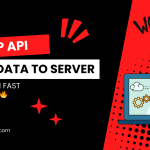The Best Fluffy Pancakes recipe you will fall in love with. Full of tips and tricks to help you make the best pancakes.
The Evolution of IoT and the Need for Edge Computing
The Internet of Things (IoT) has revolutionized the way we interact with technology, connecting devices and enabling them to communicate and share data seamlessly. However, as the number of IoT devices continues to grow exponentially, the traditional cloud-based approach to data processing and analysis is facing challenges in terms of speed, latency, and bandwidth.
What is Edge Computing?
Edge computing is a distributed computing paradigm that brings computation and data storage closer to the source of data generation, enabling real-time data processing and analysis at the edge of the network. By moving computational tasks closer to the devices generating data, edge computing reduces latency and bandwidth usage, making it ideal for applications that require real-time responsiveness.
The Benefits of Edge Computing in IoT
1. Real-Time Data Processing: Edge computing allows IoT devices to process and analyze data locally, enabling real-time decision-making without relying on cloud services.
2. Reduced Latency: By processing data at the edge of the network, edge computing significantly reduces latency, ensuring faster response times for critical applications.
3. Improved Security: Edge computing enhances data security by keeping sensitive information closer to its source and reducing the risk of data breaches during transmission to the cloud.
Use Cases of Edge Computing in IoT
1. Smart Manufacturing: Edge computing enables predictive maintenance and real-time monitoring of equipment in manufacturing plants, optimizing operations and reducing downtime.
2. Smart Cities: In smart city applications, edge computing can power intelligent traffic management systems, adaptive lighting, and environmental monitoring, enhancing efficiency and sustainability.
Conclusion
Edge computing plays a pivotal role in unlocking the full potential of IoT by enabling real-time data processing and analysis at the edge of the network. As the IoT ecosystem continues to evolve, leveraging edge computing will be essential for driving innovation, improving efficiency, and enhancing user experiences across a wide range of industries.




